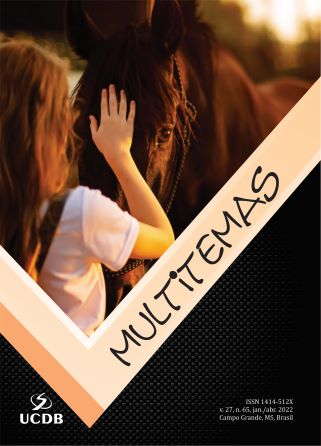Popular use of Aristolochia spp in cancer prevention and treatment
DOI:
https://doi.org/10.20435/multi.v27i65.3386Abstract
Among the innumerable genera of plants that present biological activities, there is the genus Aristolochia. Some studies show that despite presenting toxicity in humans, some species are frequently used in the treatment of cancer, using leaves and roots. The objective of this article was to carry out a bibliographic survey in the databases regarding the ethnobotanical records, of species of the genus Aristolochia spp in different regions of the world. It is an integrative review article, whose collection of information was obtained through scientific productions, published in the period from 2010 to 2020, in the Lilacs, Scielo, Medline databases; using the following terms from the Health Sciences Descriptors (DeCS): aristolochia and (extracts or phytotherapy or plants, medicinal or medicine, traditional or plants or ethobotany or therapeutic use or botany or neoplasms). The following results were obtained: Pubmed: 672 articles; Lilacs: 24; Scielo: 25 and Medline: 535, making a total of 1256 articles, of which 518 were duplicated and were rejected, leaving only 738. After a careful analysis of the titles and abstracts of each study, of this total, only 10, fulfilled the criteria of inclusion for the proposed objective. It was possible to identify a deficit in scientific production in view of the current number of species of the genus Aristolochia spp. Still, although there is similar toxicological information, there are cases in which it under-reports or does not report adverse reactions.
Downloads
Published
How to Cite
Issue
Section
License
Copyright (c) 2021 Multitemas

This work is licensed under a Creative Commons Attribution 4.0 International License.
Os artigos publicados na Revista Multitemas têm acesso aberto (Open Access) sob a licença Creative Commons Attribution, que permite uso, distribuição e reprodução em qualquer meio, sem restrições desde que o trabalho original seja corretamente citado.
Direitos Autorais para artigos publicados nesta revista são do autor, com direitos de primeira publicação para a revista. Em virtude de aparecerem nesta revista de acesso público, os artigos são de uso gratuito, com atribuições próprias, em aplicações educacionais e não-comerciais.


